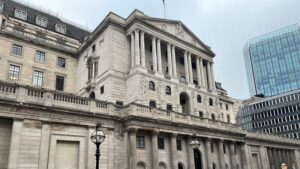The risk associated with China has shifted from fears of a ‘hard landing’ and a property bubble – symptoms of which remain as the estimated size of the country’s shadow banking system ranges from 10-30% of banking sector assets – another example of the inherent vagaries that exist when looking at an economy which is largely communist state-owned.
Today, the biggest fear associated with the country is the ripple effect caused through its financial instability and the effects on the US, Europe and emerging markets on the whole.
All makes investors’ job that much harder, doesn’t it?
Hasley’s CIO Richard Philbin, who runs £25m across the group’s four multi-manager funds says dealing with China is difficult, but essential, given the sheer size of the economy and its population. As such, he favours direct access taking a very stock-specific approach, through First State’s China Focus fund, which only invests in around 20 companies.
Rightly confident, or too much so?
He questions Chinese policymakers who last month reiterated their 7.5% growth target, suggesting they are either genuinely confident, or they plan to fudge the numbers accordingly.
When speaking about China’s slowdown, the broader emerging markets sell-off and the subsequent opportunities presented to the market it is important to remember that China is a very atypical emerging market.
Not only in terms of its size, scale and advanced state of entrepreneurialism, but also it is net creditor to the rest of the world, with a net foreign asset position and high surplus in the trade sector, according to Lombard Odier Investment Managers’ (LOIM) Gregor MacIntosh, head of global sovereign debt and foreign exchange
Philbin warns that while a huge level of change is taking place it won’t come quickly, cheaply or easily and says the economy faces far more headwinds than tailwinds.
James Calder, research director at City Asset Management takes a slightly different view.
With no direct exposure, Calder prefers to access it through broader emerging markets vehicles, those specialising in South East Asia or through Hong Kong or Singapore-listed companies, which come with less volatility attached.
“While China’s GDP has pretty much gone up in a straight line, this hasn’t really been reflected in equity markets. We’re all just waiting for the impact on the broader market now, so the news of the last few days is disappointing but not really surprising. However, if China’s growth is 7.5% or even 6% that’s still two or three times better than we’re seeing in the developing world,” he says.
With data on industrial output and retail sales that show the slowest start to the year in five and 10 years respectively, overcapacity in certain sectors reliant on commodities is starting to influence market prices.
Still driven by commodities
LOIM’s MacIntosh gives the following example: “The latest trade data showed a sharp fall in monthly exports with lunar new year distortions playing some role.
“In terms of imports, the slowdown in commodity demand is quite visible with base metals showing clear signs of a slowdown in trend. Moreover, the volatility in short-term interest rates and the accompanying volatility generated by questions over the policy stance are also creating an additional layer of uncertainty leading to a negative spill-over for investment growth.”
He says in their view, a faster-than-expected slowdown remains an underpriced risk factor in the current environment, those asset prices most exposed being hit the hardest.
In addition, the potential non-performing loans combined with policy noise remain a structural problem. Currencies such as the Australian and Canadian dollar may suffer as their terms of trade come under pressure, as well as the more directly correlated Korea and Singapore.
MacIntosh adds: “In terms of interest rates, we think that the Aussie rate has more downside, given the negative growth impact resulting from its deep links with China. This may be further amplified by the property sector, which has been showing signs of overheating.”
The perception of China is in something of a no-man’s land – neither emerging nor developed for a multitude of reasons, too big a beast to ignore yet too complex and closed-off to fully understand without significant resource.
The manufacturing story looks like being over, with consumption taking over and big western brands a favoured way of accessing the growth.
At fund level, those managers who recognise that and have a specialist view on the country may well have the insight to succeed and create the buying opportunity out of the slowdown.
But, as always, running alongside a broader emerging markets fund would probably be a wise idea.
We want to know how you access China. Is it a Europe call, or are you better looking to US brands? With domestic consumption on the rise, where are you invested and is now the right time, at the right price?







